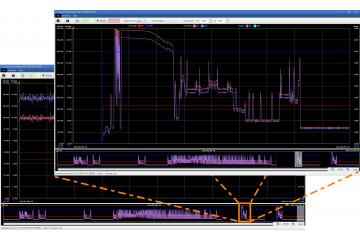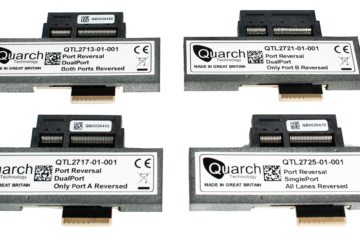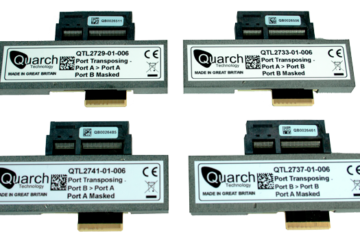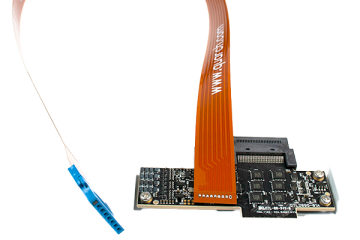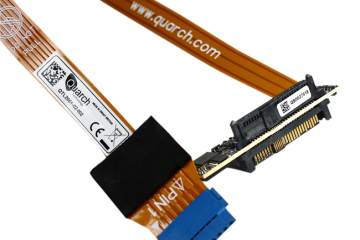
Andy Norrie
What is EDSFF? Enterprise and Data Centre SSD Form Factor
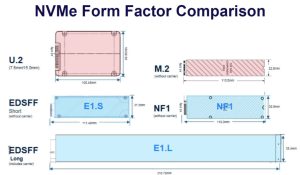
The adoption of the Enterprise and Data Center Standard Form Factor (EDSFF) has been a hot topic in the enterprise storage industry over the past few years. EDSFF is a set of form factor and interface standards tailored to rack servers and SSDs. NVMe with PCI Express x4, x8 or x16 is used for the transmission of the signal.
Development for a new standard of SSD interface came to our attention around 2016 with a prototype of what became the E1.L form factor.
The idea was to create a new form factor that would allow a very high density of storage in a 1U server. Moving away from the common SFF-8639 connector and to a design intended purely for flash devices linked over PCIe.
- Allow larger space for flash chips than in a traditional Small Form Factor (2.5” SFF) bay
- Fit a large number of drives in a 1U enclosure
- Move to a new connector with the potential for better SI at high speeds
- Increase the power consumption limits so larger SSDs could be used
- Improve cooling for high-power drives
Connector
The connector used is specified in the SFF-TA-1002 spec and a common example of this is the Amphenol ‘Mini Cool Edge’ connector:
[Mini Cool Edge 0.60mm Connectors | GenZ, EDSFF, OCP NIC 3.0, SFF-TA-1002 ]
One advantage here is that there is no plug connector. The drive PCB is extended into fingers that fit directly into the receptacle. Removing one side of the connector pair has the potential to improve signal integrity, especially at Gen5 speeds.
The connector is sometimes referred to by its ‘width’ (the number of PCIe lanes) also referred to as 1C/2C and similar. 1C is x4, 2C is x8 and so on.

The spec allows for a wide range of cross-compatibility. An x4 drive should fit in an x8 or larger slot as well. An x8 drive will also often fit in the smaller x4 slot (although it will operate at a reduced x4 lane width).
E1 Form
Initial drives tended to be long and thin (E1.L), with a variety of shorter drives coming soon after (E1.S). These came in a range of widths to accommodate larger cooling options.
E1.L tended to be x8 and E1.S at x4, but this is not fixed and the EDSFF spec allows anything from x4 to x16

E1.L is around 30cm long and comes in two thickness options: 9.5 and 18mm
E1.S is around 11cm long and has multiple length/width/thickness options
More detail on the various form factors can be found here:
Solid State Drive Form Factors | SNIA
E1 and E3 EDSFF to Take Over from M.2 and 2.5 in SSDs
E3 Form
We saw the E3 range appear as the EDSFF form factor matured. In terms of volume, these are similar to 2.5″ SFF drives but fit neatly into 2U servers. This may make it easier to incorporate them into existing product lines. The popularity of the E3 form factor has increased significantly in 2022.
As with E1, there are 2 lengths of drive (S and L), but the difference is not as significant. In addition, thicker versions (2T variants) offer larger volumes and higher power.
The following differences are described and illustrated on ServingTheHome:
E1 and E3 EDSFF to Take Over from M.2 and 2.5 in SSDs
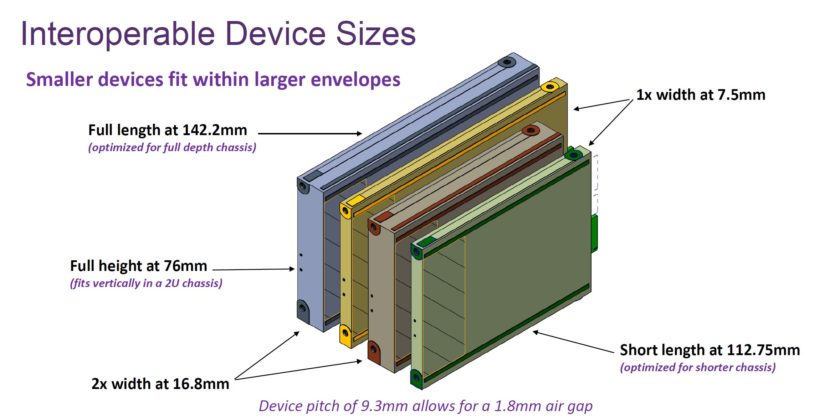
E3 devices use the same connector as E1, the only difference being the position of it, and the size of the slot the drive fits into.
Test Equipment
Quarch has ‘breakers’ for automated hot-plug and fault injection of EDSFF form factors, including the latest Gen5 SSDs
We also have power analysis fixtures for both our PPM and PAM range, so power measurement and active power-loss/margining tests are easy to perform
Contact your local reseller or email support@quarch.com to get started!

